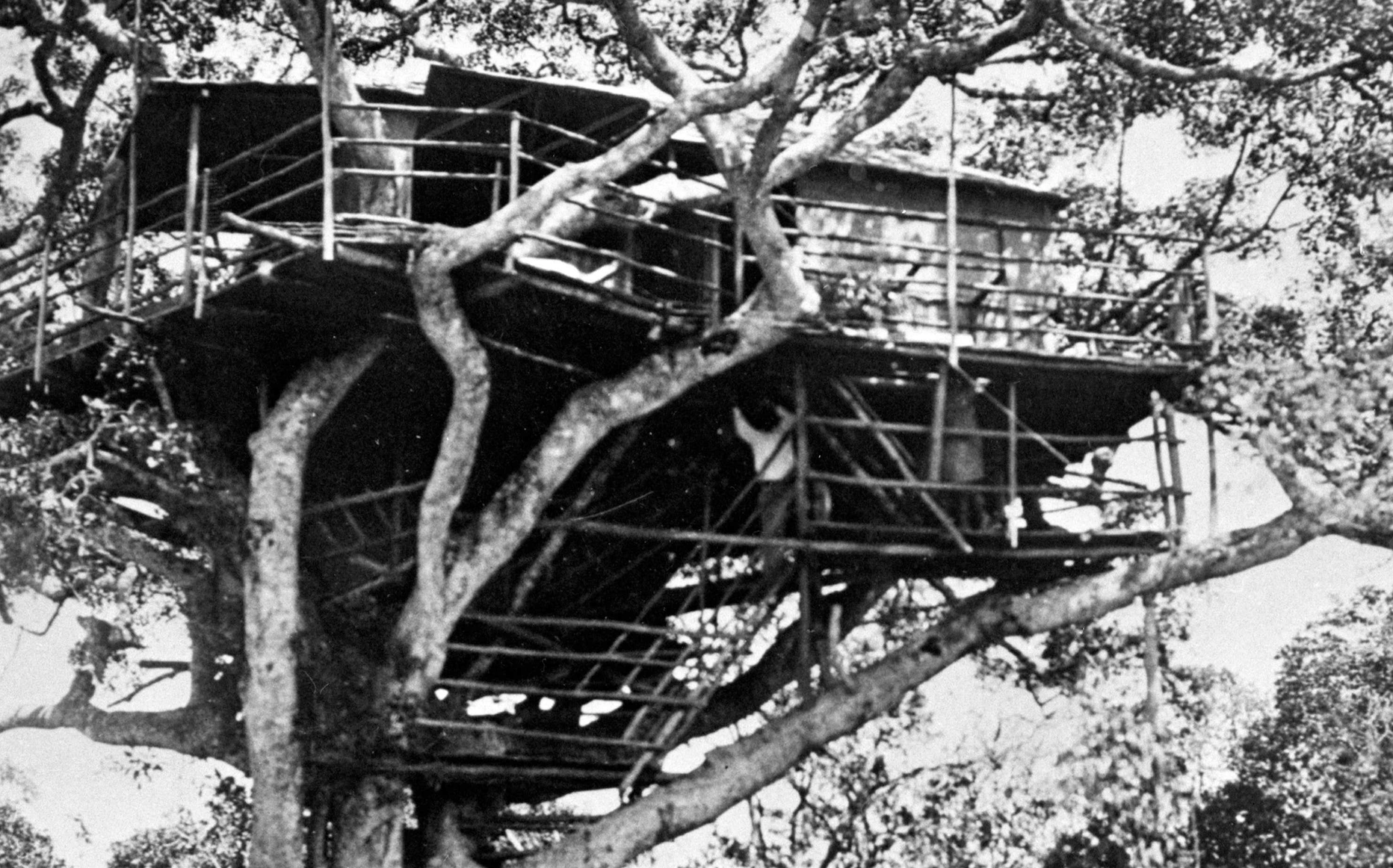How Elizabeth became Queen watching baboons at sunrise from Kenyan treetops
The princess and the Duke of Edinburgh were away on a Commonwealth tour when King George VI died in 1952.
Princess Elizabeth was watching baboons while taking photographs of the Kenyan sunrise from a hotel set in the branches of a giant fig tree when she became Queen.
It was February 6 1952 and the 25-year-old princess and her husband the Duke of Edinburgh were in the African country on a Commonwealth tour.
Back in the UK, the ailing King George VI died in the early hours of the morning at Sandringham.
Elizabeth and Philip had spent the night at the remote Treetops Hotel, accessible via a ladder, in Aberdare Forest, where they watched baboons in the jungle.
The princess climbed up to a look-out point at the top of the tree to see the dawn breaking.
The Duke’s equerry and friend, Mike Parker, was at the Queen’s side at the look-out when they spotted an eagle hovering overhead.
“I never thought about it until later but that was roughly the time when the King died,” he later recalled.
Lady Pamela Hicks, who was the Queen’s lady in waiting and also Philip’s cousin, said the Queen and the Duke were “the last people in the world to hear” that King had died.

Crowds at Ludgate Circus read the papers carrying the news of George VI ‘s death
“She goes up as a princess. The King dies that night. She comes down the ladder as a Queen,” Lady Pamela said.
Secret ciphers were sent by the British Embassy to the governor, announcing the King’s death, but the coded messages could not be read as the key to the code was elsewhere.
When the news finally filtered through to royal aides, Elizabeth was resting later at Sagana Lodge, a wedding present from the people of Kenya.
The Queen’s private secretary, Martin Charteris, was in the nearby town, having a drink in a restaurant, when a writer approached him and remarked on the news.

Returning to the Lodge, he told Mr Parker, who crawled into the room were the Queen was at her desk, motioned to the Duke of Edinburgh and secretly turned on the radio very low to get confirmation but prevent the Queen finding out this way.
It allowed Philip to break the sad news to his wife while they were alone as he took her into the garden, telling her as they walked slowly up and down the lawn.
Lord Charteris remembered seeing the new monarch seated at her desk in the Lodge appearing “very composed, absolute master of her fate” and ready to fulfil the role for which she had been carefully groomed.
Asked what name she wished to use as Queen, she replied simply: “My own name, of course.”

The new Queen Elizabeth II returns to Clarence House with the Duke of Edinburgh after flying back to London
Just hours later, the monarch and her consort were on their way back home.
Lord Charteris and Mr Parker had packed up, worked out timetables, sent a flood of signals, organised a plane at Entebbe, another from Mombasa to get there, and timed a London airport arrival for 4pm the following day.
With the King’s health failing when they had left home, a Royal Standard had been stowed in the baggage.
Elizabeth’s mourning clothes, waiting for her in Entebbe, were prepared for her to wear.

Dressed in black, Queen Elizabeth II about to set foot on British soil for the first time since her accession
It was dusk on February 7 1952 when a slim, pale figure, dressed in mourning black, descended the steps of the jet airliner.
After a long journey home, the young, new Queen set foot on English soil – the runway at London airport – for the first time as sovereign.
The Press Association
Latest posts by The Press Association (see all)
- What you need to know about weight loss jabs and how to make them work effectively - April 25, 2025
- Is our skin more susceptible to sun damage as we age? - April 25, 2025
- Special stamps to mark 80th anniversary of VE Day - April 24, 2025
- Test your knowledge with our penguin-themed quiz - April 24, 2025
- Prince Louis shows off missing front teeth in new photo to mark seventh birthday - April 23, 2025



















